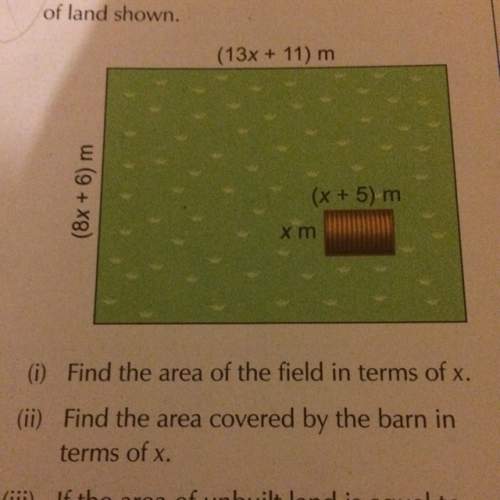
Mathematics, 30.10.2020 17:40 sierram298
Assume that the nullspace of L = {0}. Explain how it follows that the nullspace of M is {0}? How does it follow that the equation L(X) = Y has at least one solution for all Y ∈ ? Hint: First explain why M is an n × n matrix.

Answers: 2
Another question on Mathematics

Mathematics, 21.06.2019 19:00
Write the pair of fractions as a pair of fractions with a common denominator
Answers: 3

Mathematics, 21.06.2019 19:20
Suppose that a households monthly water bill (in dollars) is a linear function of the amount of water the household uses (in hundreds of cubic feet, hcf). when graphed, the function gives a line with slope of 1.65. if the monthly cost for 13 hcf is $46.10 what is the monthly cost for 19 hcf?
Answers: 3

Mathematics, 21.06.2019 21:40
The management of a supermarket wants to adopt a new promotional policy of giving a free gift to every customer who spends more than a certain amount per visit at this supermarket. the expectation of the management is that after this promotional policy is advertised, the expenditures for all customers at this supermarket will be normally distributed with a mean of $95 and a standard deviation of $20. if the management wants to give free gifts to at most 10% of the customers, what should the amount be above which a customer would receive a free gift?
Answers: 2

Mathematics, 21.06.2019 21:40
Write the contrapositive of the conditional statement. determine whether the contrapositive is true or false. if it is false, find a counterexample. a converse statement is formed by exchanging the hypothesis and conclusion of the conditional. a) a non-converse statement is not formed by exchanging the hypothesis and conclusion of the conditional. true b) a statement not formed by exchanging the hypothesis and conclusion of the conditional is a converse statement. false; an inverse statement is not formed by exchanging the hypothesis and conclusion of the conditional. c) a non-converse statement is formed by exchanging the hypothesis and conclusion of the conditional. false; an inverse statement is formed by negating both the hypothesis and conclusion of the conditional. d) a statement not formed by exchanging the hypothesis and conclusion of the conditional is not a converse statement. true
Answers: 1
You know the right answer?
Assume that the nullspace of L = {0}. Explain how it follows that the nullspace of M is {0}? How doe...
Questions

Physics, 16.10.2019 17:50

Mathematics, 16.10.2019 17:50

Social Studies, 16.10.2019 17:50


Computers and Technology, 16.10.2019 17:50


Biology, 16.10.2019 17:50





Chemistry, 16.10.2019 17:50


History, 16.10.2019 18:00




English, 16.10.2019 18:00





